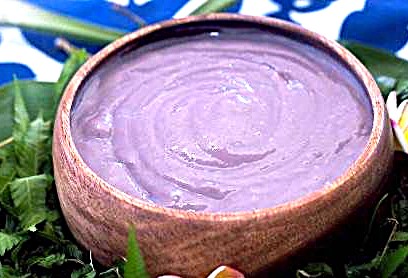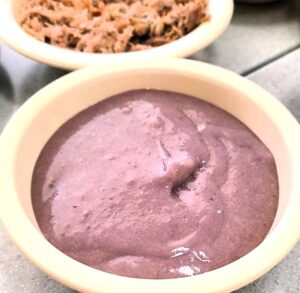Last Updated on January 13, 2025 by Karen
Whether you’re looking for a delicious addition to your Polynesian puree repertoire or trying new things inspired by Hawaiian luaus, this taro-based puree recipe is for you.
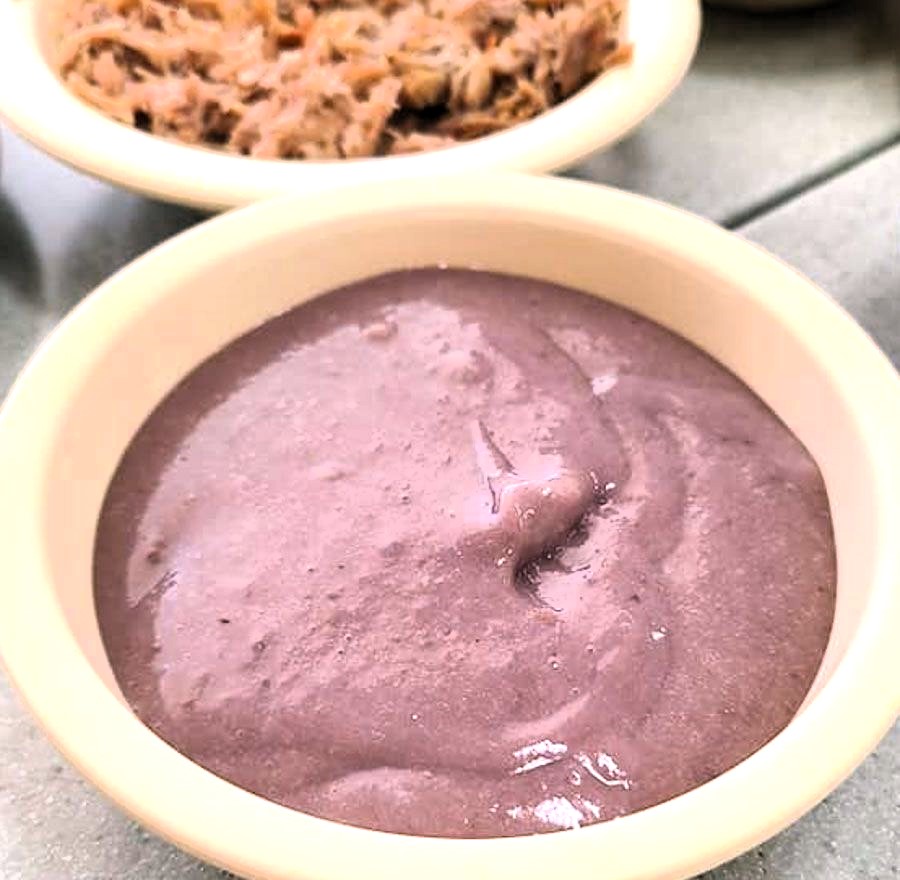
If you’ve ever stumbled across crossword puzzle clues like “traditional Hawaiian dish” or “staple food of Polynesia”, chances are the likely answer is something related to taro root or poi. This beloved tuber has been a cornerstone of the Polynesian diet for centuries and is celebrated for its versatility and nutritional value.
What is taro?
Taro, a tropical root vegetable with a rich history and global appeal, is a culinary gem celebrated for its versatility and unique flavor. Known for its starchy corms and tender leaves, taro is a staple in cuisines across Asia, Africa, and the Pacific Islands. Its creamy texture and slightly nutty flavor make it perfect for dishes like poi, poulet fafa, and taro puree. They’re also perfect for comforting soups, flavorful curries, or indulgent desserts like taro bubble tea and pudding.
Meanwhile, its vibrant green leaves, when properly cooked, transform into hearty wraps or savory side dishes. Packed with fiber, vitamins, and minerals, taro is not only delicious but also a nutritious addition to any meal. Just remember—this humble root must be cooked thoroughly to unlock its true potential, as raw taro contains natural irritants. Whether roasted, steamed, or simmered, taro is a flavorful way to explore the culinary traditions of the world!
Can you freeze taro root?
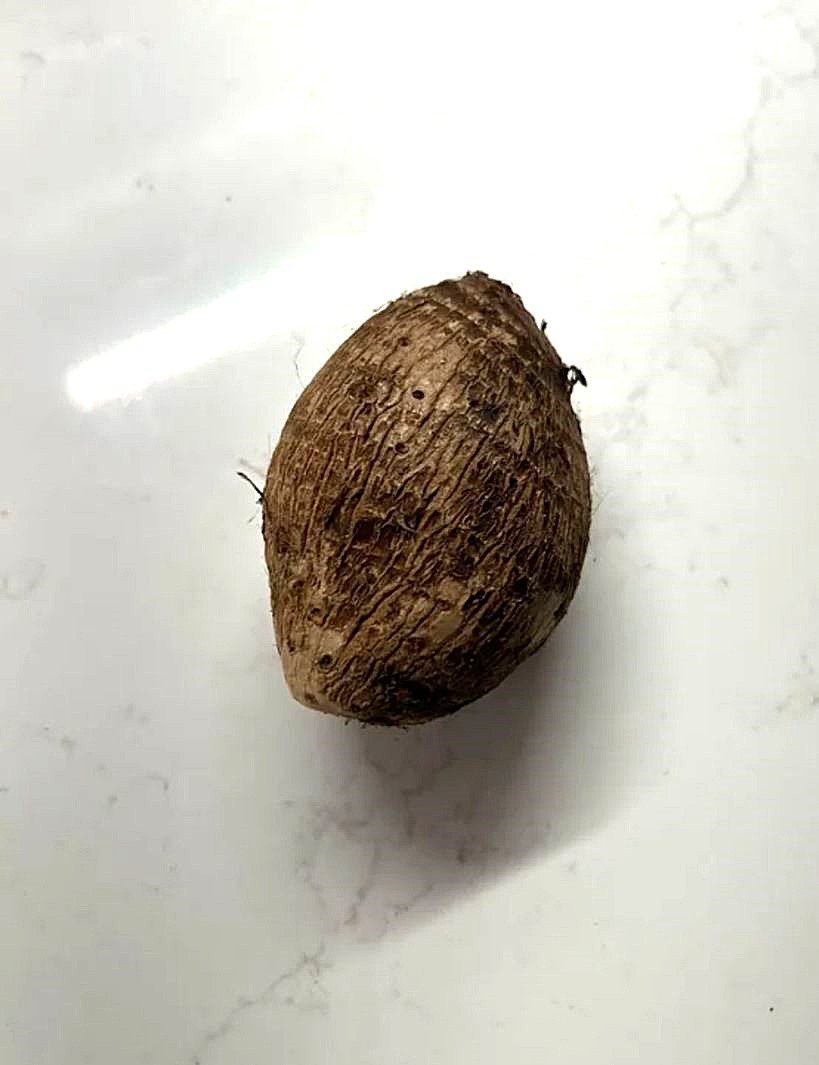
What does taro taste like?
Taro has a mild, slightly sweet, and nutty flavor with earthy undertones. The taste can vary slightly depending on how it’s prepared, but it generally has a creamy, starchy texture when cooked. Some people compare it to a combination of sweet potato and chestnut, with a subtle vanilla-like sweetness. Taro is often used in both savory and sweet dishes, and when combined with other ingredients, it can take on different flavors, making it a versatile base in various cuisines.
Ingredients you’ll need to make this Hawaiian (or Polynesian) taro based puree recipe
The following ingredients come together to create a simple yet flavorful puree that celebrates the essence of Polynesian cuisine.
Taro Root (Fresh or Frozen)
Taro root is the star of this dish, offering a creamy texture and nutty flavor. When fresh, its rough, brown exterior hides the white or purple-streaked flesh within. If fresh taro isn’t available, frozen taro is a convenient alternative, retaining much of its flavor and texture. This nutrient-packed tuber is a staple food in Polynesian and Hawaiian diets, celebrated for its versatility in dishes like poi and taro puree.
Coconut Cream or Milk
Canned coconut cream enhances the puree with a rich, creamy texture and a subtle sweetness that complements the earthiness of taro. It’s a traditional Polynesian ingredient that adds authenticity to the dish. If coconut cream is unavailable, canned coconut milk is a practical substitute, offering a similarly indulgent flavor. For a lighter option, consider using light coconut milk or diluting canned coconut milk with water.
Sea Salt
A small pinch of sea salt brings out the natural flavors of the taro and coconut cream, elevating the dish to perfection. While it may seem minor, this ingredient is essential for balancing the sweetness and enhancing the overall taste profile of the puree.
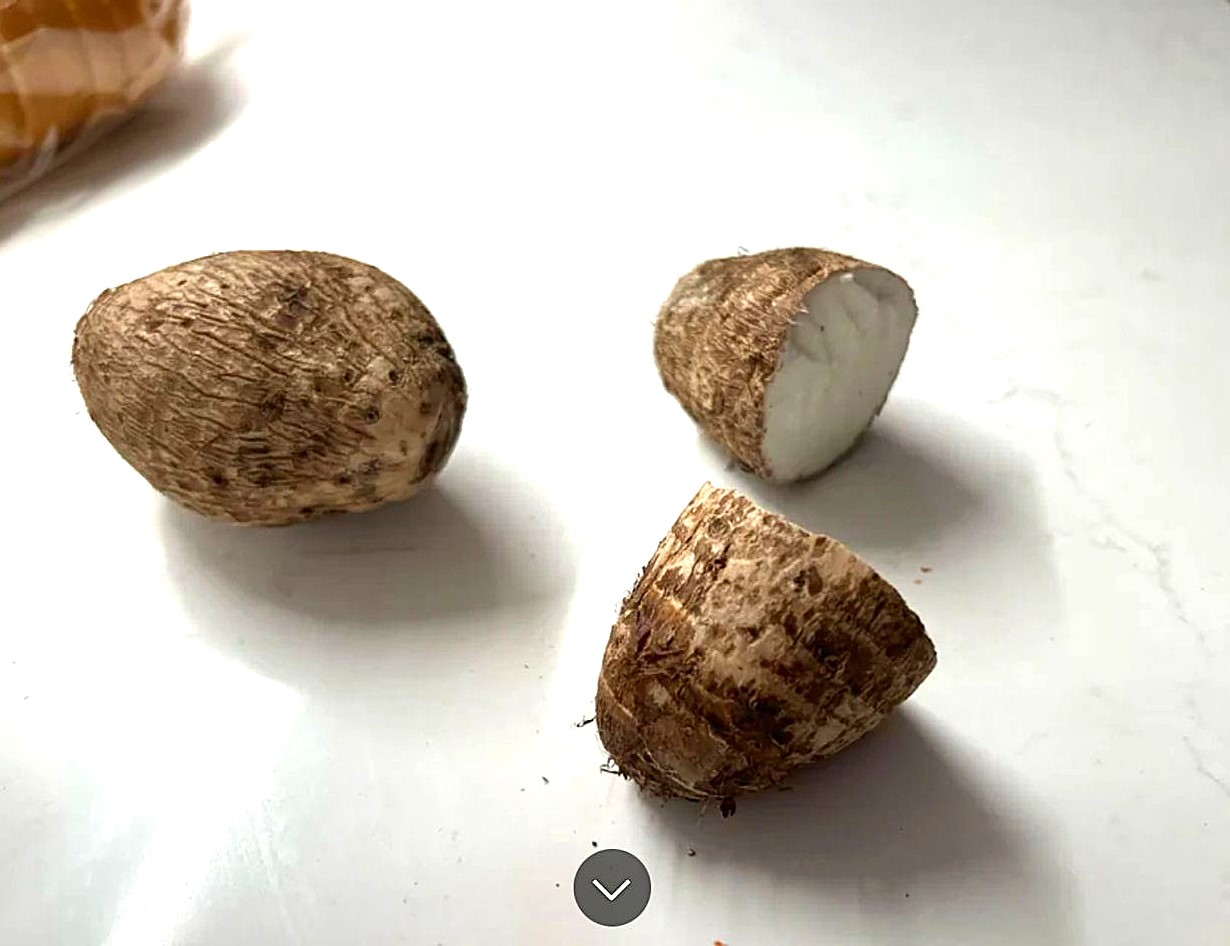
How to prepare your Polynesian puree
- Prepare the Taro Root
- Peel and chop the taro corm into chunks. If handling taro root feels daunting, don’t worry—search results on TikTok can guide you with tips and tricks.
- Boil or steam the pieces until tender (about 20-25 minutes).
- Blend It Smooth
- Transfer the cooked taro to a blender or food processor.
- Add fresh coconut milk gradually, blending until smooth. Adjust consistency based on your preference.
- Season to Taste
- Stir in a pinch of salt. For a sweet variation, add a bit of honey or sugar. For a savory twist, mix in garlic or herbs.
- Serve It Up
- Enjoy it warm as a side dish for poisson cru, grilled fish, or roasted vegetables.
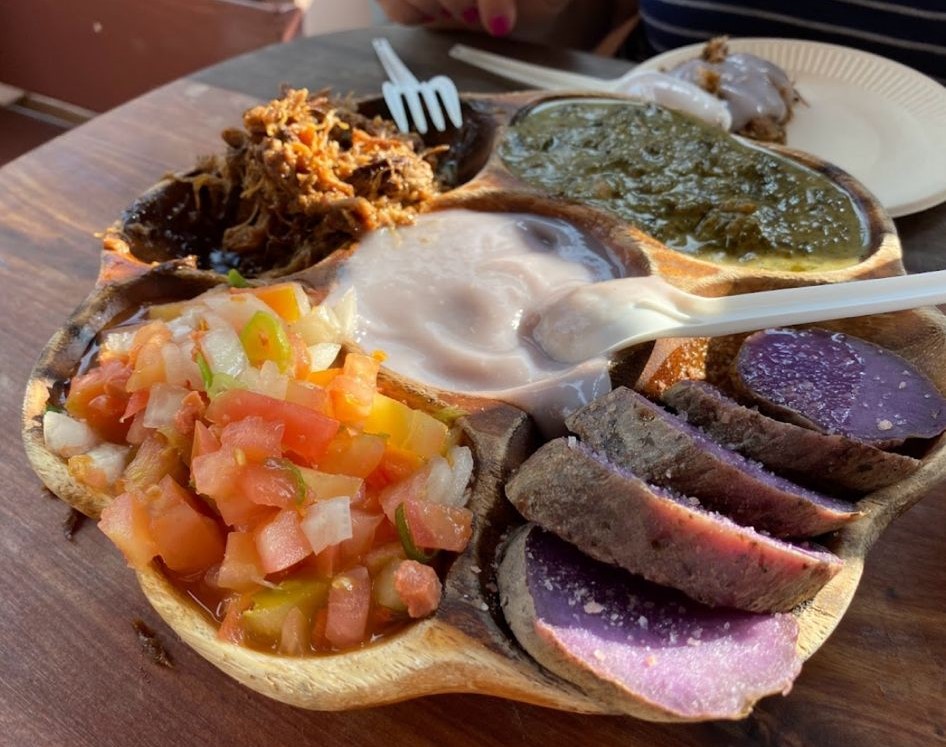
Why taro-based puree?
This dish isn’t just delicious—it’s packed with health benefits. Taro root is rich in fiber, vitamins, and minerals, making it a nutrient-dense option for those exploring a healthier diet. It’s also gluten-free, making it a great alternative to traditional mashed potatoes.
What are some variations to this polynesian taro based puree?
- Sweet Potato Blend: Add orange or purple sweet potatoes for natural sweetness and a vibrant color.
- Hawaiian-Style Poi: Omit sweeteners and keep the puree simple with just water and taro for a traditional poi-like version.
- Butter or Coconut Oil: Incorporate butter for a creamy savory note or coconut oil for a dairy-free, tropical flavor.
- Maple Syrup or Honey: Add a touch of sweetness for a dessert-inspired version.
- Adding Herbs or Spices: Blend in fresh herbs like cilantro, parsley, or basil for a savory twist. Add warming spices like nutmeg, cinnamon, or ginger for a sweet and spiced variation.
- Toasted Coconut Garnish: Top with toasted coconut flakes for crunch and a nutty finish.
These variations allow you to customize the dish for different occasions, from traditional meals to creative modern interpretations!
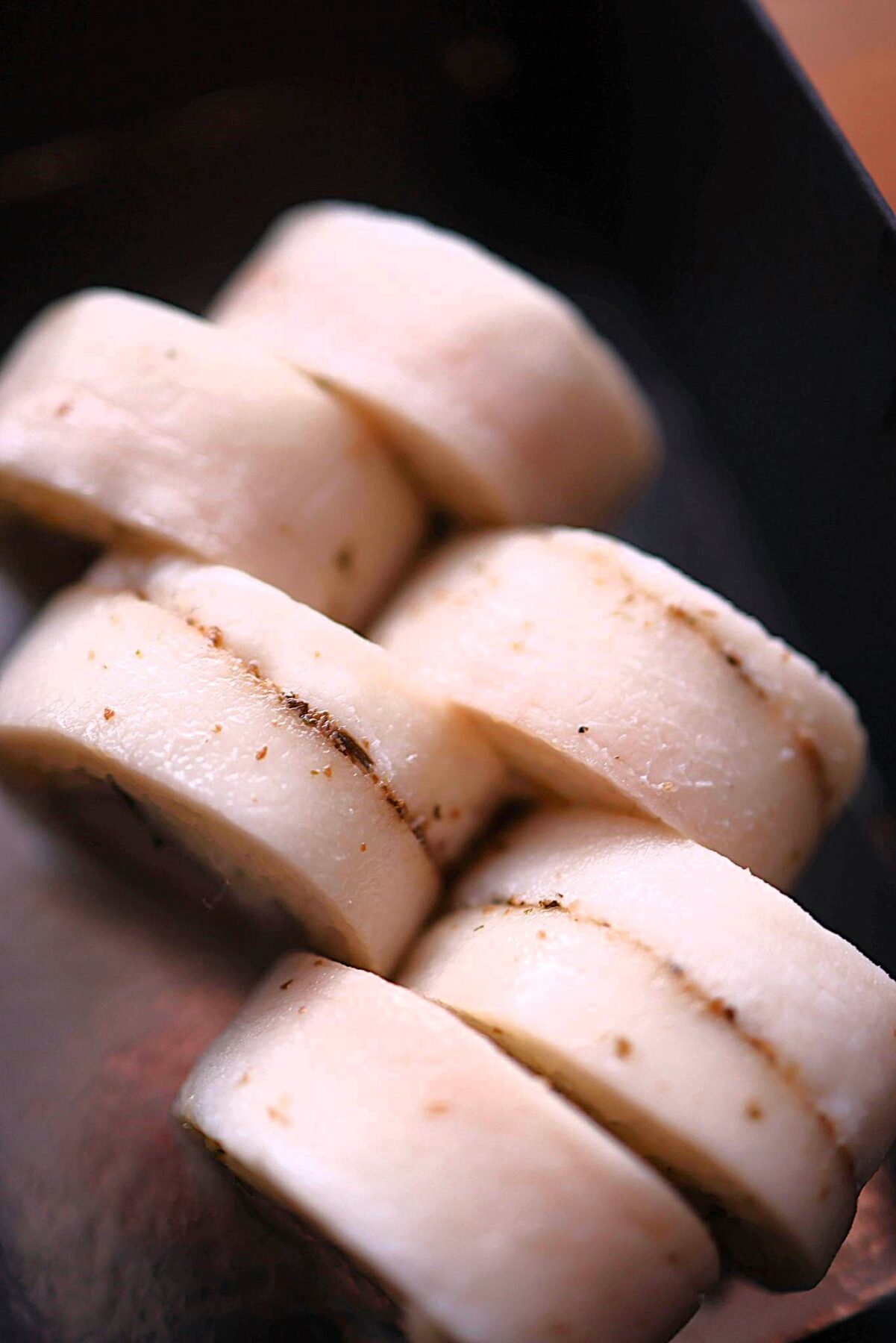
What are some ways to serve taro puree?
You can pair your taro puree with:
- Classic Hawaiian dishes served at luaus or lunch platters with dishes like Kalua Pork.
- French Polynesian favorites like poisson cru or poulet fafa.
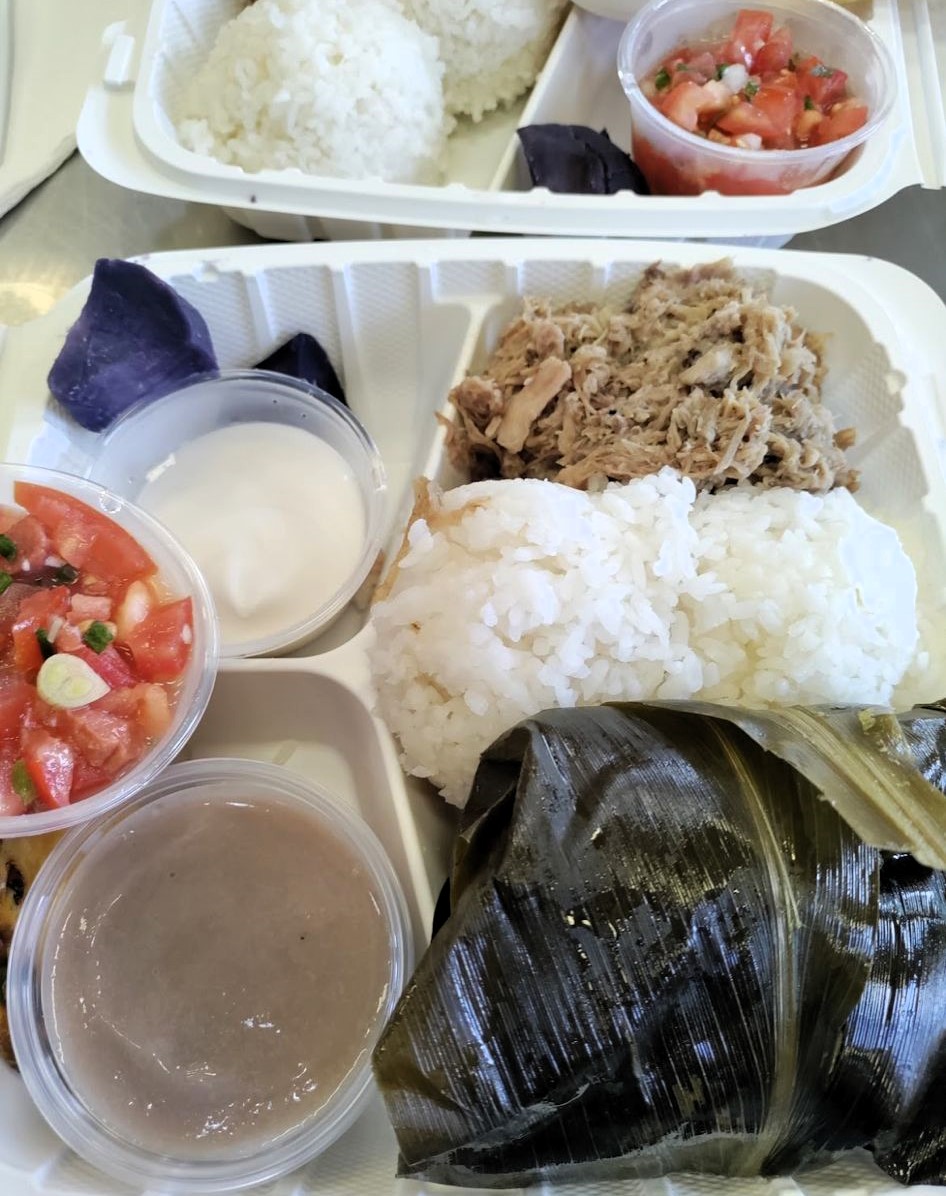
Hawaiian (or Polynesian) Taro Based Puree Recipe
Ingredients
- 2 pounds taro root
- 1 cup coconut cream or coconut milk
- 1/2 teaspoon salt adjust to taste
Fun Fact: Taro Root in Puzzles
Taro and its uses often pop up as crossword answers in popular crossword puzzles, from the Daily Themed Crossword Game to variety puzzles in the Daily Mirror or USA Today Crossword. While solving a new puzzle or tackling cryptic crossword puzzles like the LA Times Crossword or New York Times Crossword, if you’re stumped on a word length or answer length, a handy anagrammer tool or crossword solver can provide better results.
Exploring new themes in cooking, like traditional Hawaiian dishes, adds richness to your culinary repertoire. Whether you’re inspired by general knowledge puzzles, solving similar crossword clues, or simply trying something different, taro-based purée is a must-try.
Have you tried making this Polynesian puree? Share your experience in the comments! And if you’re a crossword fan, let us know your favorite taro-related crossword clue. Who knows, you might even discover new themes for your next puzzle-solving adventure!
